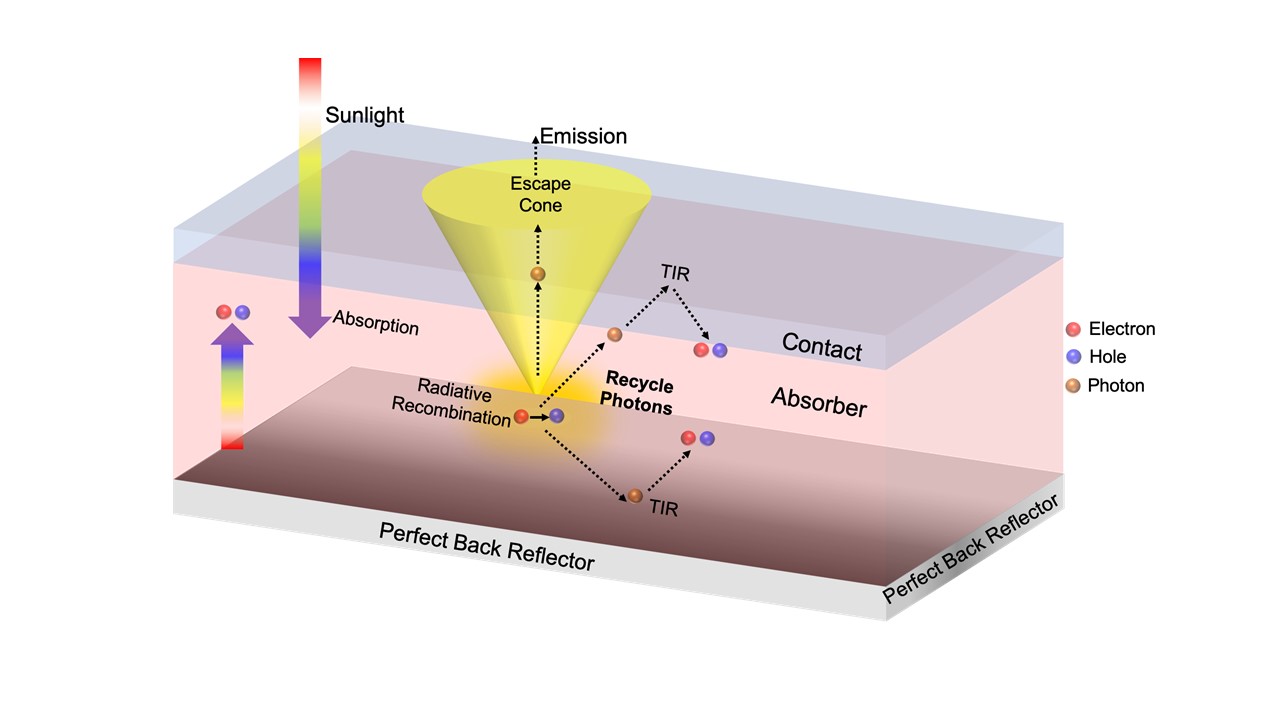Metal halide perovskites have emerged in recent years as promising photovoltaic materials due to their excellent optical and electrical properties, enabling perovskite solar cells (PSCs) with certified power conversion efficiencies (PCEs) greater than 25%. Provided radiative recombination is the dominant recombination mechanism, photon recycling – the process of reabsorption (and re-emission) of photons that result from radiative recombination – can be utilized to further enhance the PCE toward the Shockley–Queisser (S-Q) theoretical limit. Geometrical optics can be exploited for the intentional trapping of such re-emitted photons within the device, to enhance the PCE. However, this scheme reaches its fundamental diffraction limits at the submicron scale. Therefore, introducing photonic nanostructures offer attractive solutions to manipulate and trap light at the nanoscale via light coupling into guided modes, as well as localized surface plasmon and surface plasmon polariton modes. This review focuses on light-trapping schemes for efficient photon recycling in PSCs. First, we summarize the working principles of photon recycling, which is followed by a review of essential requirements to make this process efficient. We then survey photon recycling in state-of-the-art PSCs and propose design strategies to invoke light-trapping to effectively exploit photon recycling in PSCs. Finally, we formulate a future outlook and discuss new research directions in the context of photon recycling.



